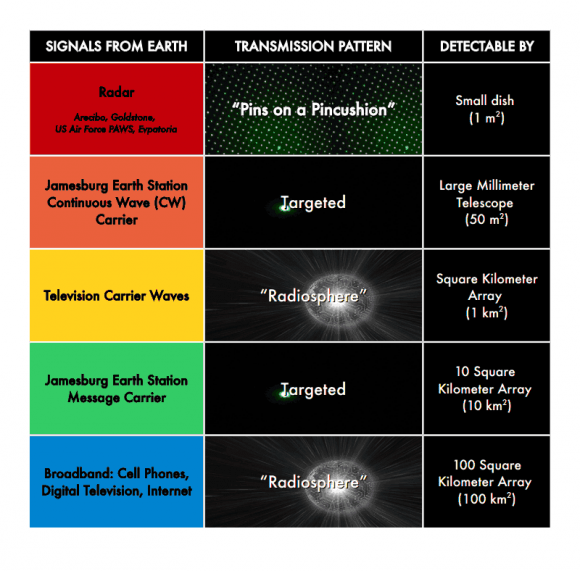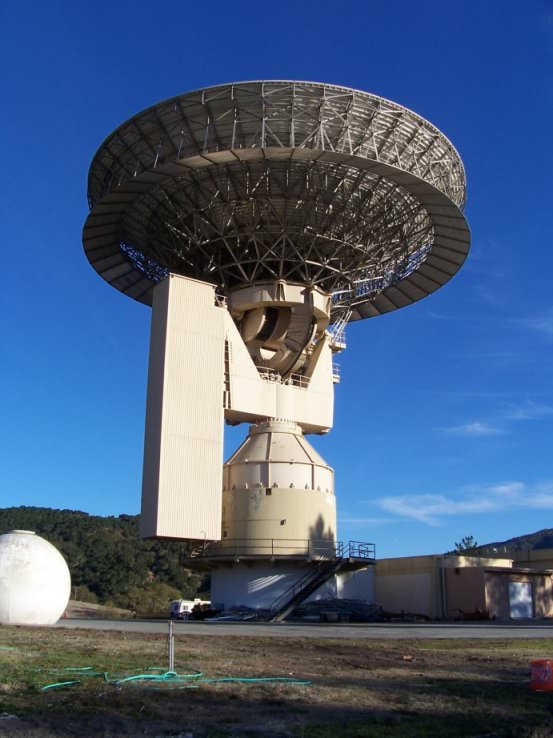Although scientists have been listening for years to search for indications of other sentient life in the Universe, just a few efforts have been made by humans to purposefully send out messages to the cosmos. Called METI (Messaging to Extraterrestrial Intelligence) or Active SETI (Search for Extraterrestrial Intelligence), these messages have so far been just one-time bursts of info – or “pulses in time” said Dr. Jacob Haqq-Misra.
Haqq-Misra is leading a team of scientists and entrepreneurs who are launching a new initiative called “Lone Signal” which will send the first continuous mass “hailing messages” out into space, starting later this month. They’ll be specifically targeting one star system, Gliese 526, which has been identified as a potentially habitable solar system.
And yes, the general public can participate.
“From the start we wanted to be an experiment where anyone on Earth could participate,” said Haqq-Misra during a press event on June 11, 2013, announcing the project.
“Our scientific goals are to discover sentient beings outside of our solar system,” said Lone Star co-founder Pierre Fabre, also speaking at the event. “But an important part of this project is to get people to look beyond themselves and their differences by thinking about what they would say to a different civilization. Lone Signal will allow people to do that.”
Lone Signal will be using the recommissioned radio dish at the Jamesburg Earth Station in Carmel, California, one of the dishes used to carry the Apollo Moon landings live to the world.
Timelapse of the Jamesburg Earth Station
Lone Signal will be sending two signals: one is a continuous wave (CW) signal, a hailing message that sends a slow binary broadcast to provide basic information about Earth and our Solar System using an encoding system created by astrophysicist and planetary scientist Michael W. Busch. The binary code is based on mathematical “first principles” which reflect established laws that, theoretically, are relatively constant throughout the universe; things like gravity and the structure of the hydrogen atom, etc.
“This hailing message is a language we think could be used to instigate communication,” said Haqq-Misra, “and is the most advanced binary coding currently in use.”
The second signal, embedded in the first signal, will be messages from the people of Earth.

Since Gliese 526 is 17.6 light years from Earth, the messages will be beamed to the coordinates of where the star will be in 17.6 years from now. Even though no planets have been found yet in this system, the Lone Signal team said they are confident planets exist there since missions like Kepler and Corot have found that most stars host multiple planets.
The Lone Signal team is allowing anyone with access to the internet to send the equivalent of one free text message or Twitter message — a 144-character text-based message — into space. The team said they want to have messages sent from people all around the world to provide messages that are “representative of humanity.”
Anything additional, like more messages, images, etc., will cost money, but those funds will help support the project.
“In effect we are doing our own Kickstarter and doing the crowdfunding on our own,” said Lone Signal CEO Jamie King. “Long Signal would not be possible without crowd sourcing support, which will be used for maintaining the millions of dollars in equipment, powering the dish, running the web portal and other critical tech that makes the project possible.”
If you want to be part of the project and be a “beamer” you can currently sign up at the Lone Signal website –which currently doesn’t have much information. But on June 18th their public site will go live and ‘beamers will be able to submit messages as well as:
• Share Beams / Track Beams – Once signed in, users can see how far their beam has traveled from Earth as well as share it with the beaming community.
• Dedicate Beams – Parents, friends and loved ones can dedicate a beam to others.
• Explore – The Explore section gives beamers current data on the Lone Signal beam, who is sending messages, from where on Earth, overall stats, etc.
• Blog / Twitter – Via their blog and Twitter, the Lone Signal science team and other contributors will be posting opinion articles on associated topics of interest as well as sharing the latest science news and updates.
One you submit your “beam” you’ll be able to “echo” it on your Facebook and Twitter accounts.
After a user sends their initial free message, Lone Signal will be offering paid credit packages for purchase that allow users to transmit and share longer messages as well as images using credits in the following USD price structure:
• $0.99 buys 4 credits.
• $4.99 buys 40 credits.
• $19.99 buys 400 credits.
• $99.99 buys 4000 credits.
Following the initial free message, each subsequent text-based message costs 1 credit. Image-based messages cost 3 credits.
The team said that each message will be sent as an individual packet of information and won’t be bunched with other messages.
While some scientists have indicated that sending messages out into space might pose a hazard by attracting unwanted attention from potentially aggressive extraterrestrial civilizations, Haqq-Misra thinks the benefits outweigh the potential hazards. In fact, he and his team have written a paper about the concept.
“We want to inspire passion for the space sciences in people young and old, encourage citizens of Earth to think about their role in the Universe, and inspire the next generation of scientists and astronauts,” said Lone Signal chief marketing officer Ernesto Qualizza. “We’re really excited to find out what people will want to say, and the science of METI allows people to do this – to think about more than their own backyard.”
More info: Lone Signal

